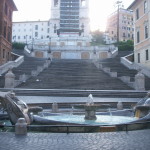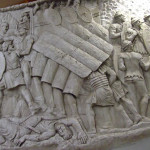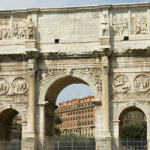The Arch of Augustus
Data Pubblicazione novembre 2, 2013Nearly two thousand years have passed since the city of Rome was at the height of its power and influence, but Italy’s capital city still retains its splendour. In its extensive downtown archaeological park you can still marvel at one of its most famous sights, the Roman Forum.
The Roman Forum, situated between the Capitoline hill and the Palatine hill, is the principal area around which the ancient Roman civilization developed. One or more arches were erected in the Roman Forum to honour the Emperor Augustus, who ruled from 27 B.C. until his death in 14 A.D. The earlier may have been erected in 29 B.C. to commemorate Emperor Augustus’ triple triumph over Mark Antony and Cleopatra, and the second may have been built in 19 B.C. to celebrate the previous year’s return of the legionary standards captured by the Parthians at Carrhae. On the other hand, some scholars claim that there was only one arch, which honoured both victories. Although remains and fragments of frieze, cornice and columns in the Doric order as well as in the Corinthian order have been attributed to the Arch of Augustus, no secure remains of the structure have survived to this day. The Arch of Augustus (Arcus Augusti) is located in the Roman Forum, near the Temple of Vesta, spanning the gap between the Temple of Caesar and the Temple of Castor and Pollux.
Only parts of the foundation of the Arcus Augusti remain, but its appearance can be deduced from Augustan coins from the period, depicting the Arch of Augustus. It was a three-way arch, and only the central arcade was vaulted. The side passages had gabled roof and flat ceilings. The spandrels of the central passage were adorned with a series of reliefs with images of Victoria, as shown by a remaining fragment. Other fragments are in the Antiquarium. Still according to Augustan coins from the period, on top of the central arch stood a quadriga. The Arch of Augustus was the first three-way Roman arch and served as a model for the Arch of Septimius Severus, which again was used as a model of the Arch of Constantine.
Related Posts
Tags: best places to visit in rome, historical places in rome, top attractions in rome
Rome Tour

Climb Saint Peter’s chapel
Rome top view is totally breath taking: your eyes will look right into Conciliazione’s street where you can ...Auditorium Parco della Musica
It is a multifunctional complex in Pietro de Coubertin street (official web site: auditorium.com): through this creation, Rome ...
CASTEL SANT’ANGELO’S TERRACE
You cannot miss Castel Sant Angelo if you are visiting Rome. In fact in its main entrance has tons ...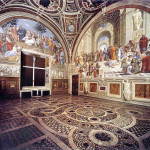
Musei Vaticani: le Stanze di Raffaello
It’s some kind of magic experienced in here that gives to the visitor a feeling that never goes ...
A Museum in Roma in Trastevere
The Museum of Roma In Trastevere (Piazza Sant'Egidio 1/b) it is a very characteristic place. Here there is ...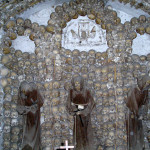
Santa Maria dell’Immacolata Concezione’s church
When you step in this church you will remain astonished from the beauty of the structure but either ...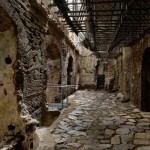
CRYPTA BALBI, NATIONAL ROMAN MUSEUM
Only one block that contain the whole Roman history: the crypt it is none other than a Lucio ...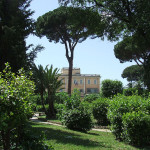
VILLA CELIMONTANA
While walking around Villa Celimontana (by Via della Navicella, 12) it is possible that you end up under ...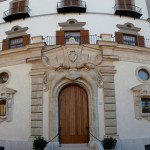
Monster’s house – Palazzo Zuccari
It is located at the bottom of Trinità dei Monti along Sistina and Gregoriana’s street, and it is ...